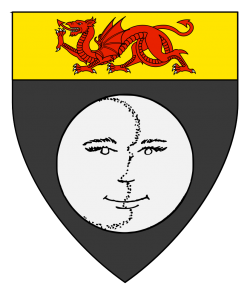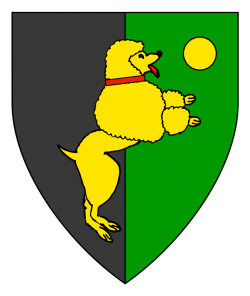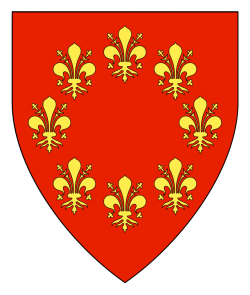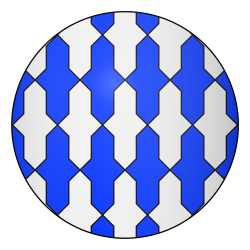Catelin wanted a name and device that reflected her family’s Scottish heritage, and had already picked a basic direction, so it didn’t take much additional effort to help her select something that was both unique and registrable.
 Azure, a stag courant to dexter base between two roses argent.
Azure, a stag courant to dexter base between two roses argent.
Catelin had been interested in a “bucking” stag, but as that isn’t a recognized heraldic posture, we went looking for alternatives which would produce a similar visual effect.
While “courant to dexter base” is an unusual arrangement, it has been registered twice, most recently in January 2016.
The white rose was a badge of the House of York.
The illustrations for both charges are taken from Fox-Davies’ 1909 book A Complete Guide to Heraldry.
Catelin is a female given name found in the British Isles.
- On 4 Jan 1637, a woman named Catelin Maurenus was married in London, England. (Family Search batch number M05426-1.)
- Catelin dates to 1198 in Talan Gwynek’s “Feminine Given Names in A Dictionary of English Surnames.”
Straquhin is a late-period byname from the Scottish Lowlands.
- On 19 Feb 1609, a woman named Christan Straquhin was married in Angus, Scotland. (Family Search batch number M11310-2.)
- Straquhin dates to 1533 and 1549 in Sharon L. Krossa’s “Early 16th Century Scottish Lowland Names.”
SENA Appendix C indicates that after 1100, English and Scottish name elements may be combined.








